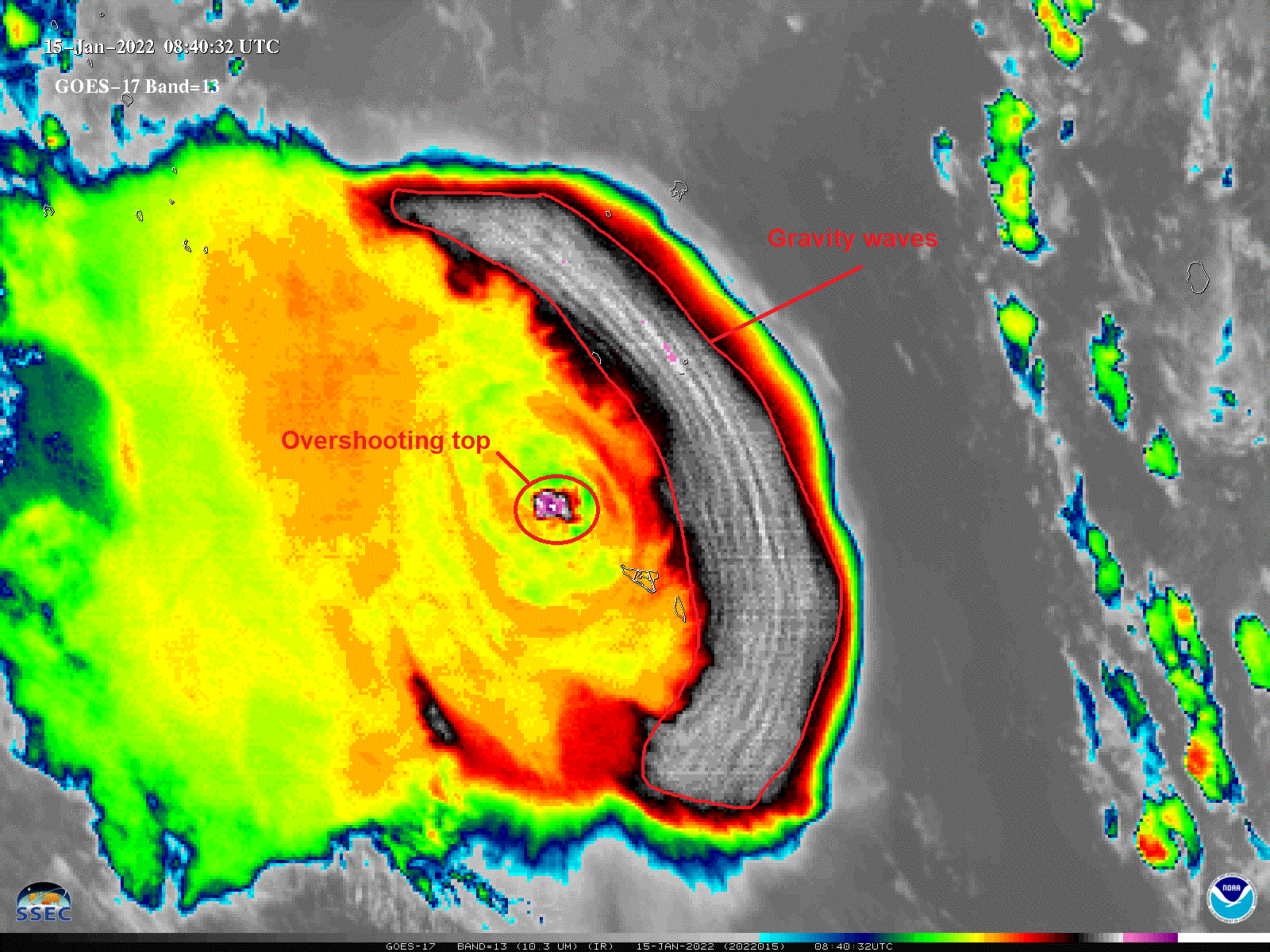1.1. Plume top features
Ash particles and gases form the eruption column as they are ejected from the vent at high velocity. The initial momentum from the eruption propels the column upwards. As surrounding air is drawn into the column, the bulk density decreases and it starts to rise buoyantly into the atmosphere. At a point where the bulk density of the column is the same as the surrounding atmosphere the column will cease to rise and starts moving laterally. Unlike with convective cells, that point is not necessarily the tropopause as the buoyancy energy involved is often much higher.
When the ash and gas clouds reach the level of equilibrium, lateral dispersion starts. The plume then forms an umbrella or mushroom-shaped ash plume in a low wind speed regime.
Figure 3: Sandwich product, Mount Kelud eruption, 13 February 2014 17:30 UTC. © Martin Setvak (CHMI)
The above sandwich product (Figure 3) uses a fine-scale temperature color table for the coldest temperatures. This color enhancement accentuates minor temperature variations that can be interpreted as a concentric wave pattern also known as gravity waves.
These gravity waves are initiated by the hot gases and tephra spewed out of the volcanic vent. Gas and ash eruptions are irregular and pulsating events rather than a continuous flow. When hot gas emissions reach a temperature inversion or finally the equilibrium level in a stable environment, they cause a disturbance that propagates horizontally. These individual pulses can be seen as overshooting tops (dark red central spot in Figure 3).
Gravity waves can occur at any level in the atmosphere, provided there is a stable layer with a temperature inversion. A stable stratification is common at levels above the tropopause but such temperature inversions are also found at much lower levels over seas. When the air is saturated, gravity waves produce water droplets and become visible when the air is lifted (Figure 4).
Figure 4: Gravity waves captured by the concentric cloud formation. Cumbre Vieja eruption seen from Aqua MODIS Natural Color RGB, 1 October 2021 at 14:41 UTC.
There is a particular kind of pockmarked or granular cloud top structure that occurs in DIBS (Dust Infused Baroclinic Systems) when mineral desert dust forms a characteristic pattern during nighttime cooling. A similar pattern, apparently based on the same physical principle, is observed at the top of volcanic ash plumes (Figure 5) at night and in the morning hours.
Figure 5: Day Night band SNPP, Mount Kelud eruption, 13 February 2014 17:30 UTC. © Martin Setvak (CHMI)
Quiz
The image below shows the eruption plume of Hunga Tonga-Hunga Ha`apai volcano on 15 January 2022 as seen from GOES-West satellite (10.35 µm channel).
Mark the overshooting top and the area where gravity waves are visible, then check the solution.



